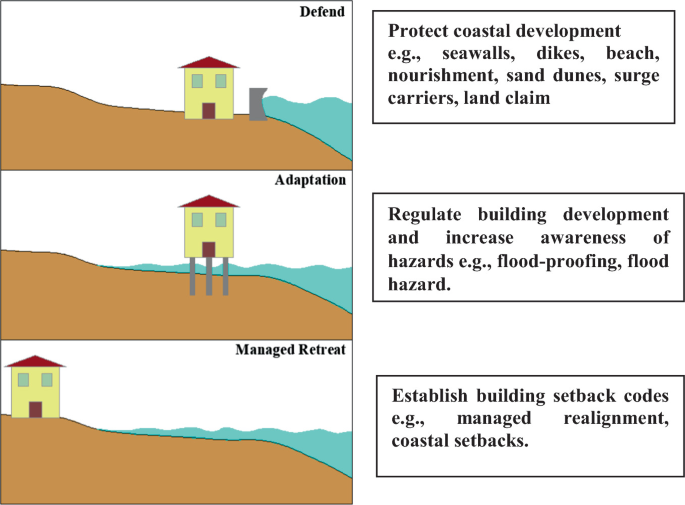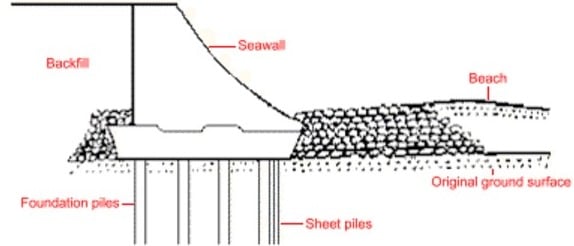7 Easy Facts About Shore Protect Team Explained
How Shore Protect Team can Save You Time, Stress, and Money.
Table of Contents4 Simple Techniques For Shore Protect TeamShore Protect Team for DummiesGetting My Shore Protect Team To WorkUnknown Facts About Shore Protect TeamHow Shore Protect Team can Save You Time, Stress, and Money.All about Shore Protect TeamThe Of Shore Protect Team
Reduction in home value: As the area tourism is influenced by erosion, so after that is the economic climate. Customers are less most likely to browse for a coastline residence that can be ruined anytime by the upcoming flooding and disintegration emergency. In turn, property worth can go down immensely and influence the entire region.Whether a beach is simply small and jampacked or has to close entirely for the safety and security of the environment and neighboring residential properties, this considerably impacts tourist. Subsequently, neighborhood economies are impacted (https://link-man.org/Shore-Protect-Team_383033.html). Risk of injury: The increased risk of flooding and architectural failings creates an enhanced danger of injury to close-by travelers and area participants

is home to greater than 84,240 miles of coast with 41% of it exposed to the open sea. Coastal designers supervise of securing the shore against changes by minimizing the detrimental effects of both natural and man-made occurrences. Coastline stabilization is directly associated to their work. Beachfront resorts: Due to the fact that coastline erosion impacts tourist, it affects the success of waterfront hotels.
The Best Guide To Shore Protect Team
Coastal industrial services: No travelers suggests no organization. Coastal state parks: State parks that exist along shorelines are at risk of damage.
Soft stablizing is a far better option for the environment and even more sustainable overall. Hard stabilization uses synthetic structures as defense to regulate disintegration. Generally, these structures are mounted at best angles or alongside stop sand motion and reduce the force of waves. A lot of types of tough stabilization like seawalls and sheet metal are not excellent for shoreline stabilization.
Shore Protect Team Can Be Fun For Anyone
There's additionally insufficient proof of their performance relying on the sort of shoreline and regional conditions. Tough stablizing techniques have a tendency to be harder to install and don't match the natural visual, protruding like an aching thumb and damaging neighborhood ecosystems in many circumstances. Beach sustenance is the process of adding shed sand and sediment back to beaches after erosion has actually happened.
TrapBags help in the process of coastline nourishment by safeguarding all-natural ecosystems and allowing plants to expand. While this procedure can be expensive and is not permanent, the pros often tend to surpass the cons. TrapBag barriers deal several buildings that make them excellent for seaside and riverbank erosion protection. They're: Eco-friendly: You can utilize native soil both to border and to fill up the TrapBags.

Shore Protect Team - An Overview
They can additionally be set up without any hefty equipment. Budget friendly: TrapBags are perfect for both tiny and huge areas of coastline.
The proper seawall layout relies on location-specific facets, consisting of bordering disintegration processes. There are 3 primary kinds of seawalls: upright, bent, stepped, and mounds (see table below).
All-natural obstacles, such as reef and mangrove woodlands, prevent the spread of tidal waves and the flow of seaside waters and mitigated the flood and surge of water. A cost-benefit method is an efficient means to identify whether a seawall is proper and whether the benefits are worth the cost.
The Basic Principles Of Shore Protect Team
A seawall is a fixed attribute which can contrast with the dynamic nature of the coastline and impede the exchange of sediment between land and sea. The table listed below sums up some positive and unfavorable effects of seawalls which can be used when comparing their efficiency with various other seaside administration alternatives, such as beach nutrients. [] Advantages and disadvantages of seawalls according to Short (1999) Benefits Negative aspects Long term remedy in comparison to soft coastline nutrients.

This can trigger coastlines to dissipate, providing them pointless for coastline goers. Normally, seawalls can be an effective method to control coastal erosion, but just if they are built well and out of products that can stand up to the force of ongoing wave power. Some understanding is needed of the seaside processes and morphodynamics particular to the seawall place.
Some Known Facts About Shore Protect Team.
The proper seawall design counts on location-specific aspects, consisting of surrounding disintegration procedures. There are 3 primary kinds of seawalls: upright, bent, stepped, and mounds (see table listed below). A report released by the United Nations Environment Programme (UNEP) suggests that the tidal wave of 26 December 2004 triggered less damage in the locations where natural barriers were present, such as mangroves, coral reefs or seaside plant life.
All-natural barriers, such as coral reefs and mangrove forests, avoid the spread of tidal waves and the flow of coastal waters and alleviated the flood and rise of water. A cost-benefit method is a reliable means to identify whether a seawall is suitable and whether the benefits deserve the expense.
See This Report about Shore Protect Team
A seawall is a fixed feature which can clash with the dynamic nature of the coast and hamper the exchange of debris in between land and sea. The table below sums up some favorable and adverse results of seawalls which can be made use of when contrasting their efficiency with various other seaside monitoring alternatives, such as coastline nourishment. [] Advantages and disadvantages of seawalls according to Short (1999) Benefits Disadvantages Long-term option in contrast to soft beach sustenance. bulkhead maintenance.

This can trigger beaches to dissipate, providing them ineffective for coastline goers. Typically, seawalls can be a successful means to control coastal disintegration, but only if they are constructed well and out of materials that can stand up to the pressure of ongoing wave power.